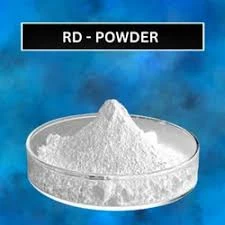
Dec . 21, 2024 15:37 Back to list
Exploring Applications and Properties of Methyl Hydroxyethyl Cellulose in Various Industries
Understanding Methyl Hydroxyethyl Cellulose (MHEC) and Its Applications
Methyl Hydroxyethyl Cellulose (MHEC) is a versatile and widely utilized derivative of cellulose, a natural polymer found in the cell walls of plants. MHEC is appreciated for its unique properties and characteristics, making it a vital component across various industries, including construction, food, pharmaceuticals, and personal care products. This article delves into the structure, properties, applications, and significance of MHEC.
Structure and Properties
MHEC is formed by modifying cellulose through methylation and hydroxyethylation processes. These modifications enhance water solubility and improve the material's thickening and film-forming properties. The chemical structure includes both methyl groups (-CH3) and hydroxyethyl groups (-CH2CH2OH) attached to the cellulose backbone. This structure provides MHEC with excellent water retention ability, stability over a wide range of pH levels, and high compatibility with various additives.
MHEC is known for its non-ionic nature, which allows it to interact favorably with other non-ionic surfactants and polymers. It is a white to off-white, odorless powder that dissolves in cold or hot water, forming a viscous solution. The viscosity of MHEC solutions can be adjusted by altering the concentration and the degree of substitution of the methyl and hydroxyethyl groups.
Applications Across Industries
1. Construction
MHEC plays a critical role in the construction industry, primarily in the production of cement-based mortars, tile adhesives, and self-leveling compounds. Its ability to improve workability, water retention, and adhesion makes it an essential additive. By enhancing the viscosity of the mixture, MHEC allows for better application and reduces the segregation of solids. Moreover, it helps to maintain the moisture in the mortar, which is crucial for proper curing and bonding.
2. Food Industry
china mhec-methhyl hydroxyethyl cellulose

In the food industry, MHEC is used as a thickening agent, emulsifier, and stabilizer. Its ability to improve texture and consistency makes it popular in various food products such as sauces, dressings, dairy products, and bakery items. MHEC can enhance the mouthfeel of food, provide smoothness, and prevent the separation of ingredients, contributing to the overall quality and attractiveness of food items.
3. Pharmaceuticals
MHEC is widely used in the pharmaceutical industry due to its biocompatibility and non-toxic nature. It serves as a binder in tablet formulations, ensuring uniform distribution of active ingredients and improving tablet hardness. Additionally, MHEC is employed in controlled-release formulations, where its viscosity properties help modulate the release rate of drugs. Its gel-forming ability also makes it suitable for the preparation of gels and creams.
4. Personal Care Products
In personal care, MHEC is found in a variety of products, including shampoos, conditioners, lotions, and creams. It acts as a thickener and stabilizer, providing desirable viscosity and texture. MHEC enhances the spreadability of products and helps retain moisture on the skin and hair, contributing to the overall effectiveness of personal care formulations.
Environmental Considerations
One of the significant advantages of MHEC is its bio-based origin and biodegradability. As consumers increasingly demand environmentally friendly products, MHEC stands out as a sustainable option. Its production involves cellulose sourced from renewable resources, promoting the use of biodegradable materials compared to synthetic polymers.
Conclusion
Methyl Hydroxyethyl Cellulose (MHEC) is a multifaceted compound with an extensive range of applications across various industries. Its unique properties, including water solubility, thickening capabilities, and film-forming characteristics, make it a valuable additive in construction, food, pharmaceuticals, and personal care products. As industries continue to evolve and prioritize sustainability, MHEC's biodegradable nature and renewable resources position it as a favorable choice for the future. Understanding the significance of MHEC not only highlights its role in enhancing product performance but also underscores the importance of innovation in utilizing natural polymers for sustainable development.
-
Versatile Hpmc Uses in Different Industries
NewsJun.19,2025
-
Redispersible Powder's Role in Enhancing Durability of Construction Products
NewsJun.19,2025
-
Hydroxyethyl Cellulose Applications Driving Green Industrial Processes
NewsJun.19,2025
-
Exploring Different Redispersible Polymer Powder
NewsJun.19,2025
-
Choosing the Right Mortar Bonding Agent
NewsJun.19,2025
-
Applications and Significance of China Hpmc in Modern Industries
NewsJun.19,2025







